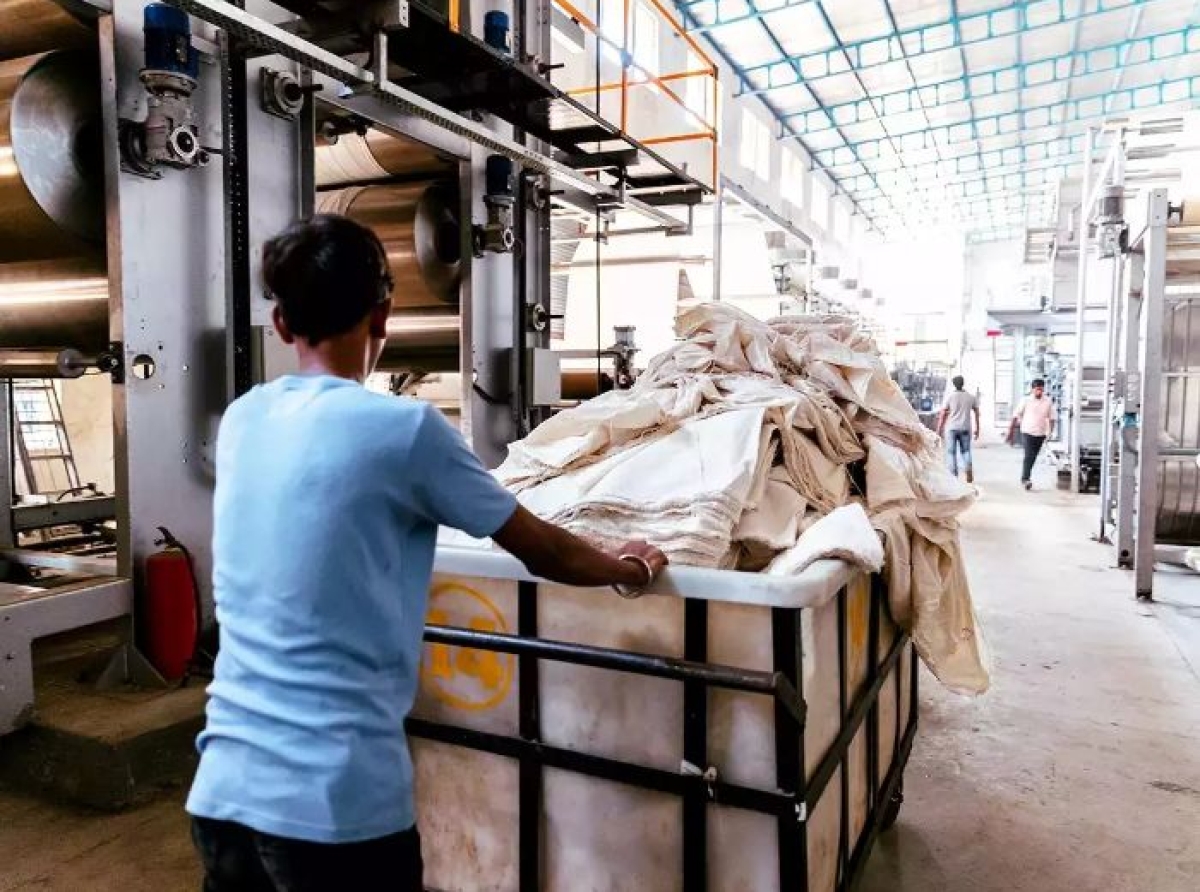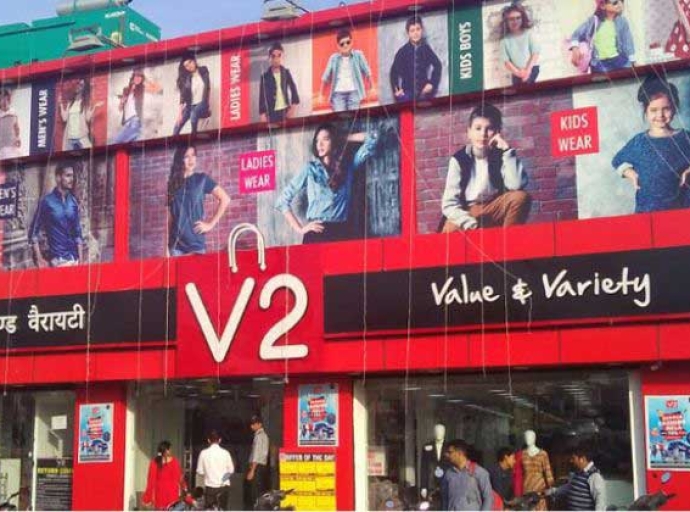Discretionary spending cut hurts Apparel Industry

04 April 2023, Mumbai
India's textile and garment sector (T&C), which is worth $200 billion, is in a state of crisis due to reduced clothing purchases in major markets such as the United States and Europe. This drop in sales is primarily due to a surge in inflation following the conflict in Ukraine.
This crisis is an exception to India's otherwise healthy and thriving economy. However, this slump is predicted to continue well into 2023, increasing the risk of layoffs in a sector that employs over 45 million people.
Fundamental View
We have to say," The Apparel Industry is a vast and highly diverse sector that spans everything from designer labels to fast fashion. Without any doubt, the industry is guided by consumer demand, which is influenced by strategic patience factors like trends, personal preferences, and buying power.
Again, one of the deciding factors that affect the apparel/clothing industry is the level of discretionary spending by consumers.
Let us quickly describe "Discretionary spending" as the sum of money that buyers have left after paying for essentials/necessities Viz. housing, food, transportation, etc. Also when in good times consumers have greater discretionary income, obviously they will tend to spend more on non-essential items like clothing/apparel.
However, discretionary spending can be impacted by a range of external factors such as changes in the economy, inflation, unemployment rates, and changes in consumer behavior. In times of economic downturn, people tend to reduce their discretionary spending and focus more on necessities. This reduction in spending impacts the apparel industry, and the effects can be felt in various ways.
Firstly, a reduction in discretionary spending leads to lower sales for apparel retailers. Consumers who have less disposable income are more likely to cut back on buying clothing, especially high-end or luxury items. Instead, they may opt to buy cheaper clothing from fast fashion brands or limit their clothing purchases altogether.
This reduced demand can lead to a decline in sales, profits, and revenue for apparel retailers, and in some cases, the closure of stores or even bankruptcy.
Secondly, another observation is that falling discretionary spending can also hurt the production side of the apparel/clothing industry. When demand for apparel/clothing falls, retailers are likely to lessen their orders from manufacturers.
This shrinking demand can result in a decrease in production and job losses in the manufacturing sector. This can have a ripple effect on the wider economy, with reduced employment/jobs resulting in reduced levels of consumer spending and a decrease in economic growth and progression.
Again, falling discretionary spending can hurt the interest of the fashion industry on the whole which is disturbing.
In the given scenario when consumers have shrinking disposable income, there is a strong probability that they are less likely to experiment with new fashion trends, rather than, choose more practical apparel/clothing choices.
Another observation is that this can result in a slowdown in the pace of fashion cycles and a fall in demand for new styles, patterns, and designs. This can potentially adversely impact the fashion industry, which is pretty much dependent on innovation, creativity, and newness/novelty to drive sales & volumes up.
Concomitant
The reduction in discretionary spending can have a significant impact on the apparel industry.
Lower sales, reduced production, and a decline in fashion innovation can all occur as a result of reduced consumer spending.
Apparel retailers and manufacturers need to adapt to changes in consumer behavior and economic conditions to survive and thrive in an increasingly competitive and challenging industry.
Textile Industry Facing Existential Crisis
Despite being a significant industry in India, the textile and garment sector has been struggling to maintain its performance in recent months.
Export revenue, which accounts for more than 22% of the industry's total revenue, has declined for five consecutive months, falling by more than 15% year-over-year to $3.1 billion in November. Additionally, domestic sales remain weak due to high costs and low-quality imported clothing.
Several factors have contributed to the crisis, including rising raw material costs, poor demand, and reduced consumer confidence due to forecasts for 2023.
Conundrum; As a result, textile companies are reducing their output, which has led to a 4.3% decline in manufacturing production in the July-September quarter.
This development has concerned policymakers as the government of Prime Minister Narendra Modi tries to provide employment opportunities for the millions of young people entering the workforce each year.
Cutting discretionary spending
The crisis in the textile and garment sector (T&A) is also affecting other industries, such as textile and footwear, furniture, electronics, and electrical producers. Consumer spending on these items has decreased, as consumers spend more on essentials such as food and gasoline as the economy is still not out of the woods.
Manufacturers in the textile sector have been impacted by rising local cotton prices and other costs, leading to reduced profit margins.
Domestic demand is still poor, and international orders for next summer are down by around one-third. This trend is expected to continue for at least the next six months, according to industry experts.
Government bailout for the textile industry
Several textile businesses have halted hiring and threatened to cut jobs if the government does not provide relief quickly. In Tirupur, a center for knitting in southern India with over 600,000 workers, several small companies have reduced staff numbers as they claim to be operating at less than 50% capacity.
The local sector, which produces goods worth over $8 billion annually for both domestic and international markets, anticipates up to a one-third decline in exports this year from $4.5 billion in 2021/22.
Major merchants want significant reductions to boost previously scheduled rankings, according to Raja Shanmugham, a former president of the Tirupur Exporters Association.
Domino effect
There is the least doubt that global economic turmoil/fragile economy/slowdown and cut down in discretionary spending have seriously impacted the growth of the apparel industry globally.
Citing a quick example, leading global clothing retailer H&M, the Swedish multinational clothing retailer, reported its fourth-quarter results for the period between 1 September 2022 to 30 November 2022.
Against the challenging retail environment, the company's net sales rose by 10 percent to SEK 62,433 million, Vs. SEK 56,813 million in the corresponding period of the previous year. However, in local currencies, net sales stayed flat. What one can reckon here is that the organization's growth was predominantly driven by favorable exchange rates, instead of actual sales growth.
Make no mistake here, the reasonable sales performance in a difficult retail climate could be a welcome sign for H&M and the industry per se.
Valuable quick insights; India's T&C sector faces a crisis due to shrinking purchases in destination export markets like US and Europe. This is truly caused by persisting/sticky inflation after the Ukraine war outbreak. What is worrying is, Slump likely to persist until 2023, putting 45 million jobs/employment at risk.
Discretionary spending is a pivotal factor impacting the apparel industry resulting in lower spending due to external factors/macro challenges like the economy, inflation, unemployment, and readjusted consumer behavior impacting the apparel industry in more than one way.
No-brainer, reduced sales for apparel retailers result in lower profits and revenue. Again, it is a vicious cycle as dwindling demand/postponement of demand results in a drop in fashion innovation, and production, and even can kick in bankruptcy.
In conclusion, the textile and garment sector in India is facing a significant crisis due to reduced clothing purchases in major markets, rising raw material costs, and poor demand. This crisis has the potential to lead to layoffs in a sector that employs over 45 million people.
While the government has taken some steps to address the issue, it remains to be seen how effective these measures will be in helping the sector recover.
Latest Publications

































